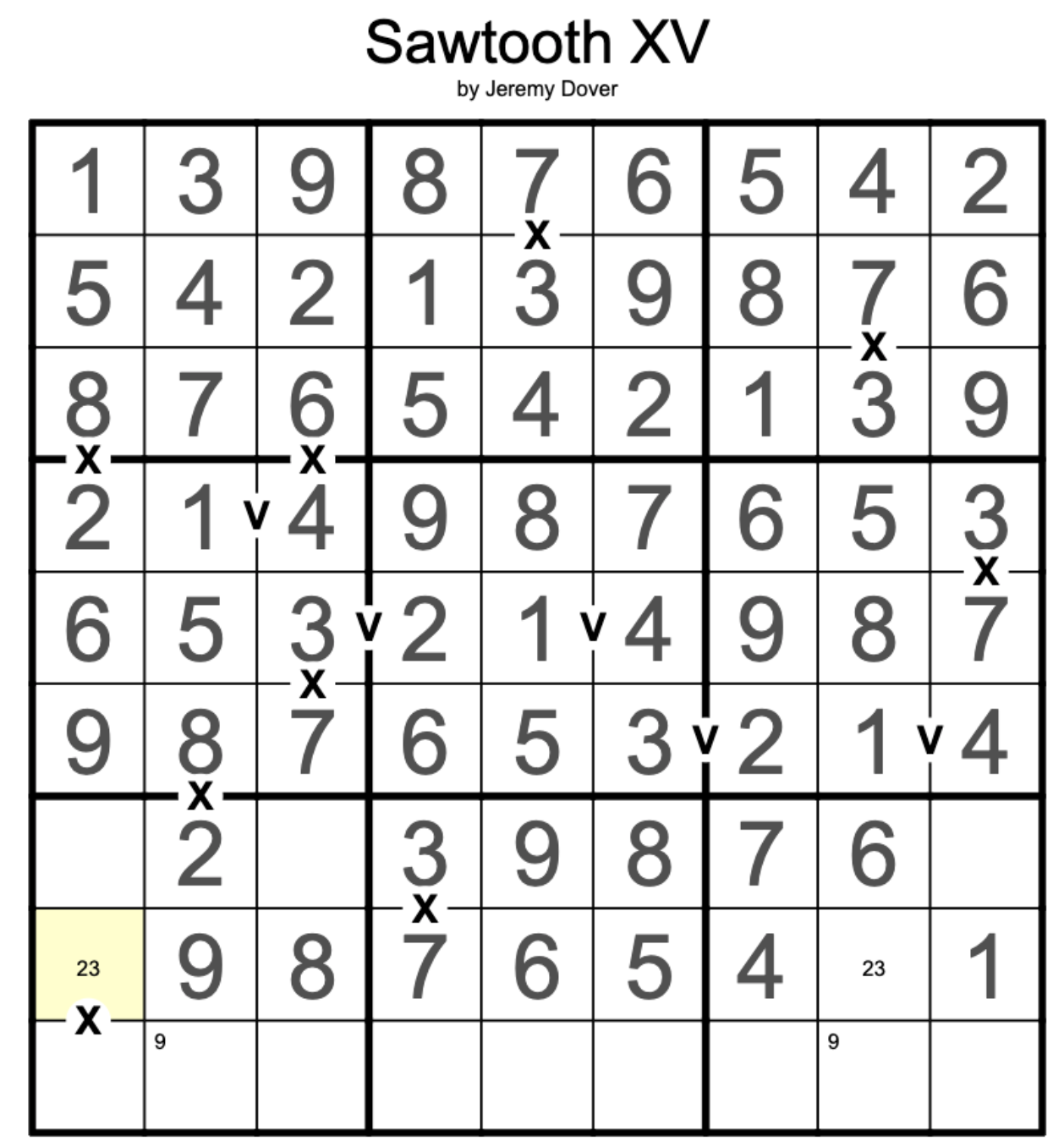The sawtooth rule gives us some super powerful tools. The other answer uses them, but doesn't outright abuse them, so here's another approach that does.
Analyzing the constraints
By sudoku, we know there will be a row in the grid that has a nine in the second column. That row is severely restricted, it's basically just all the digits in descending order, with the exception that one of the digits is picked off the sequence and placed into column 1. Let's call this the 9@c2 row.
Looking at the grid, then, we notice that row 6 cannot be that row (too many Vs) and no other row has a V that could sit between the 3 and 2 of the descending sequence. From this, we can already deduce that the 9@c2 row is either 298765431 or 398765421.
Using a very similar deduction, we can also figure out most of row "9@c3", the row with the nine in column 3. Here I've placed those rows on another sudoku grid, because we have no idea where those rows will go in our puzzle here.

Continuing in the same manner, we can figure out the next row too. Note that a 3 in c8 would place either a 2 (impossible, no V) or a 1 (already on row 9@c2) to the last column, so we get a bit further than expected:

Continuing (but not pencilmarking) in the same manner, we find that the options for the next couple of rows are seriously limited by the rows above, so we get this far:

Since we must have all of these rows in the puzzle, we find that any high digit in the middle columns instantly gives us a good many of its neighbours.
Using the analysis to cheat our way through the puzzle
Once we know that all those rows must exist somewhere, the sudoku is suddenly quite a lot easier. To get started, the final four digits of row 6 must be 1234, in an order that contains the upwards bit, which gives us

Here, we were able to place the last two digits in row 6, because we know the 1 in column 9 is on row 9@c2.
More importantly, we already know line 4! Box 5 has digits 789 on line 4, and we know from above that in the middle columns, 8 always follows a 9, and a 7 always follows an 8. So row 4 has the 9 in column 4, and we can just copy-paste in the rest of the row:

Completing boxes 4-6, we find that column 1's one must be on the top two rows.

This lets us start hunting the nines. The row with the one in column 1 has the nine in column 3. Also, row three has an 8 in column 1, so its nine must be in the last two columns, out of which one is ruled out by the X causing a clash of ones.
The nines in boxes 7 and 9 form an X-wing, so the nine in column 5 can be placed, along with the digits we know must follow it:

The six we got in r7c8 disambiguates the top 2 rows: the row that starts with a 1 has a 4 in column 8, and we can't place a 4 on the X in column 8.

Now, filling up the top is easy:

And the X in column 4 is also resolved, it must be a 3+7, with the 3 on top. This means we have found the 9@c2 row:

and the rest follows trivially.





















